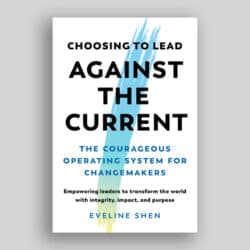A new national study, which found that the governing bodies of Canada’s charitable and nonprofit sector remain overwhelmingly white, is sparking calls for a renewed effort to make the sector look more like the people it serves.
In the first study of its kind, Statistics Canada surveyed 8,835 individuals, 6,170 of whom were board members. The crowdsourced survey, announced in the wake of Senator Ratna Omidvar’s call for more data on diversity, was conducted from December 4, 2020, to January 18, 2021. Because it was crowdsourced, in coordination with sector leaders, StatsCan says the results should be viewed with some caution.
The findings showed that organizations operating at the national level had the most diverse governing bodies, while those at the local or regional level fared the worst.
StatsCan found:
- Of board members who replied, 14% identified as being immigrants to Canada; 11% as belonging to a visible minority group; 8% as LGBTQ2+ individuals; 6% as persons with a disability; and 3% as First Nations, Métis, or Inuit.
- Despite the relative absence of diversity at the board level, more than half the survey respondents said their organizations serve Indigenous people, LGTBQ2+ individuals, newcomers, or visible minorities.
- At the national level, 20.7% of board members who responded identified as visible minorities, while 18.9% said they were immigrants to Canada. At the local level, the corresponding numbers were 10.8% and 14.2%.
- Slightly more than 30% of participants said their organizations have written diversity policies; 47% said theirs do not. The remaining 23% didn’t know.
The findings offered no surprises to those working in the sector.
Maya Roy has been advocating for more diversity in the sector for two decades. The CEO of YWCA Canada says that, during the current global reckoning over race and power, and the harms that flow from that dynamic, non-profits are just as guilty as the police or other legacy institutions when it comes to a lack of diversity.
She has seen immigrant board members pushed out by Canadian-born board members and has encountered pushback on diversity from all-white boards. Diversity training or documenting problems do not work, she adds. Change has to begin at the top. If you are providing services to Indigenous Canadians, you need an Indigenous leader, Roy says.
“I have told those who are less than enthusiastic about this that they can pay now or they can pay later. Boards that do not diversify are unqualified to handle the kinds of issues and complaints that are arising legitimately around race and exclusion.”
A refusal to diversify is an invitation to a lawsuit down the road, she adds, either internally through human resources or externally if harm is done to those accessing services.
Dahabo Ahmed Omer is executive director of the BlackNorth Initiative, formed to challenge senior Canadian business leaders to end anti-Black racism in corporate boardrooms. She sees the same challenge in the non-profit sector.
“Organizations in the charitable sector need to be leaders in diversity because these organizations have a finger on the pulse of societal issues and challenges that marginalized Canadians are facing,” she says. “Diversity is just as important in the non-profit sector as it is in the corporate world.”
The StatsCan findings are in line with similar findings in other countries. In 2018, a study of the top charities in the United Kingdom found 62% had all-white boards, and a US survey in 2017 found 87% of the executive directors of the largest foundations and non-profits were white.
Omidvar said the survey shows there is work to be done because governance boards that work to influence policy and decide how funds are spent must reflect the diversity of the communities they serve.


